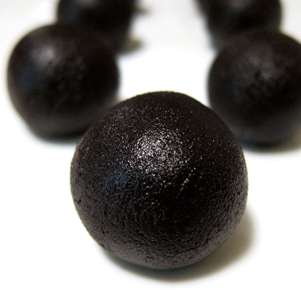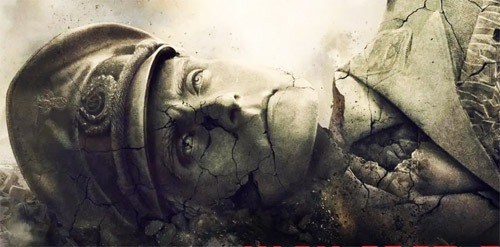by Daniel Rourke
This paper (more of an essay, really) was originally delivered at the Birkbeck Uni/London Consortium ‘Rubbish Symposium‘, 30th July 2011
Living at the very limit of his means, Philip K. Dick, a two-bit, pulp sci-fi author, was having a hard time maintaining his livelihood. It was the 1950s and Dick was living with his second wife, Kleo, in a run-down apartment in Berkley, California, surrounded by library books Dick later claimed they “could not afford to pay the fines on.”
In 1956, Dick had a short story published in a brand new pulp magazine: Satellite Science Fiction. Entitled, Pay for the Printer, the story contained a whole host of themes that would come to dominate his work
 On an Earth gripped by nuclear winter, humankind has all but forgotten the skills of invention and craft. An alien, blob-like, species known as the Biltong co-habit Earth with the humans. They have an innate ability to ‘print’ things, popping out copies of any object they are shown from their formless bellies. The humans are enslaved not simply because everything is replicated for them, but, in a twist Dick was to use again and again in his later works, as the Biltong grow old and tired, each copied object resembles the original less and less. Eventually everything emerges as an indistinct, black mush. The short story ends with the Biltong themselves decaying, leaving humankind on a planet full of collapsed houses, cars with no doors, and bottles of whiskey that taste like anti-freeze.
On an Earth gripped by nuclear winter, humankind has all but forgotten the skills of invention and craft. An alien, blob-like, species known as the Biltong co-habit Earth with the humans. They have an innate ability to ‘print’ things, popping out copies of any object they are shown from their formless bellies. The humans are enslaved not simply because everything is replicated for them, but, in a twist Dick was to use again and again in his later works, as the Biltong grow old and tired, each copied object resembles the original less and less. Eventually everything emerges as an indistinct, black mush. The short story ends with the Biltong themselves decaying, leaving humankind on a planet full of collapsed houses, cars with no doors, and bottles of whiskey that taste like anti-freeze.
In his 1968 novel Do Androids Dream of Electric Sheep? Dick gave a name to this crumbling, ceaseless, disorder of objects: Kipple. A vision of a pudding-like universe, in which obsolescent objects merge, featureless and identical, flooding every apartment complex from here to the pock-marked surface of Mars.
“No one can win against kipple,”
Dick wrote:
“It’s a universal principle operating throughout the universe; the entire universe is moving toward a final state of total, absolute kippleization.”
In kipple, Dick captured the process of entropy, and put it to work to describe the contradictions of mass-production and utility. Saved from the wreckage of the nuclear apocalypse, a host of original items – lawn mowers, woollen sweaters, cups of coffee – are in short supply. Nothing ‘new’ has been made for centuries. The Biltong must produce copies from copies made of copies – each replica seeded with errors will eventually resemble kipple.
Objects; things, are mortal; transient. The wrist-watch functions to mark the passing of time, until it finally runs down and becomes a memory of a wrist-watch: a skeleton, an icon, a piece of kipple. The butterfly emerges from its pupae in order to pass on its genes to another generation. Its demise – its kipple-isation – is programmed into its genetic code. A consequence of the lottery of biological inheritance. Both the wrist-watch and the butterfly have fulfilled their functions: I utilised the wrist-watch to mark time: the ‘genetic lottery’ utilised the butterfly to extend its lineage. Entropy is absolutely certain, and pure utility will always produce it.
Read more »


